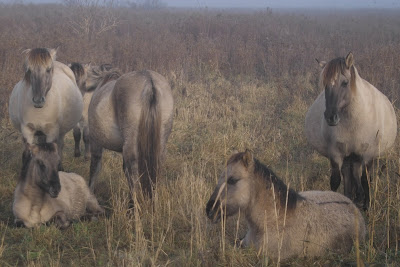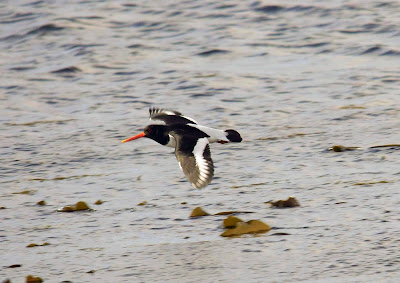Just returned from a few wonderful days in North Norfolk. Meeting old friends and seeing some great birds that I do not always see every year.
 |
| Bar-tailed Godwit with Knot |
For the first three days we stayed in Thornham and apart from mixing with the hordes at Titchwell RSPB Reserve discovered and enjoyed immensely the Thornham Harbour area. At Titchwell I always enjoy walking on the beach amongst the winter waders. I was not disappointed this year with plenty of Bar-tailed Godwits and Knots all around me. On the reserve there were plenty of Brent Geese and Wigeon and Pintail but thousands of Golden Plovers were coming in from the north all the time.
 |
| Black-tailed Godwit |
 |
| Spotted Redshank |
At Thornham Harbour I discovered that the main channel attracted waders at low tide giving excellent opportunities for photography. Bar-tailed and Black-tailed Godwits came very close as did Spotted Redshank and Grey Plover. A Short-eared Owl hunted the marsh with Marsh Harriers.
 |
| Grey Plover |
We also walked the footpath to Holme Dunes Nature Reserve. A flock of about 1,000 Pink-footed Geese were very tolerant and allowed close views as we walked to the beach. A dozen Snow Buntings flew past us and a larger flock of Twite were feeding on the saltmarsh. Reaching the sea plenty of Gannets were passing offshore and a few Red-throated Divers and Great Crested Grebes were on the sea.
 |
| Pink-footed Geese |
Some farmland birds are quite scarce nowadays so I was delighted when checking out the Choseley area to find Corn Buntings and Yellowhammers but most of all covies of Grey Partridges.
 |
| Grey Partridges |
Moving on to Cley we stayed with our friend Mark Lynton. Morning seawatching at Cley Coastguards was pretty good on one morning. Eight Pomarines Skuas flew east and also a couple of Little Gulls. Most interesting was a Balearic Shearwater moving north. There were also a few Red-throated Divers and plenty of auks with Guillemot and Razorbill being identified. On the Eye Field large numbers of Brent Geese and Golden Plovers were assembled.
 |
| Golden Plovers |
 |
Brent Geese
|
In late afternoon we met up with my old pal Bernard Bishop the warden of Cley and he walked with us out to the hides. The evening light was perfect and the pools covered in Wigeon, Shoveler, Pintail and Golden Plover. There were also Black-tailed Godwits, Snipe and a single Ruff. Overhead a Marsh Harrier patrolled. It was a special moment and made the better by discussions with Bernard about the latest management efforts to conserve this wonderful place.
 |
| Ruff |
It was a great visit with wonderful warm weather and I must not leave it ten years before I return to North Norfolk the Mecca of all birders in the UK.








































